A potential groundbreaking date has been announced for the upcoming Englewood Nature Trail in Englewood. Stretching roughly from S Damen Avenue in the west to S Halsted Street in the east, the potential trail will replace the long-abandoned Norfolk Southern Railway lines which the city purchased in 2014. Now the city itself along with Grow Greater Englewood have revealed their initial design studies performed by Gensler after receiving $6 million last year to kick off efforts.
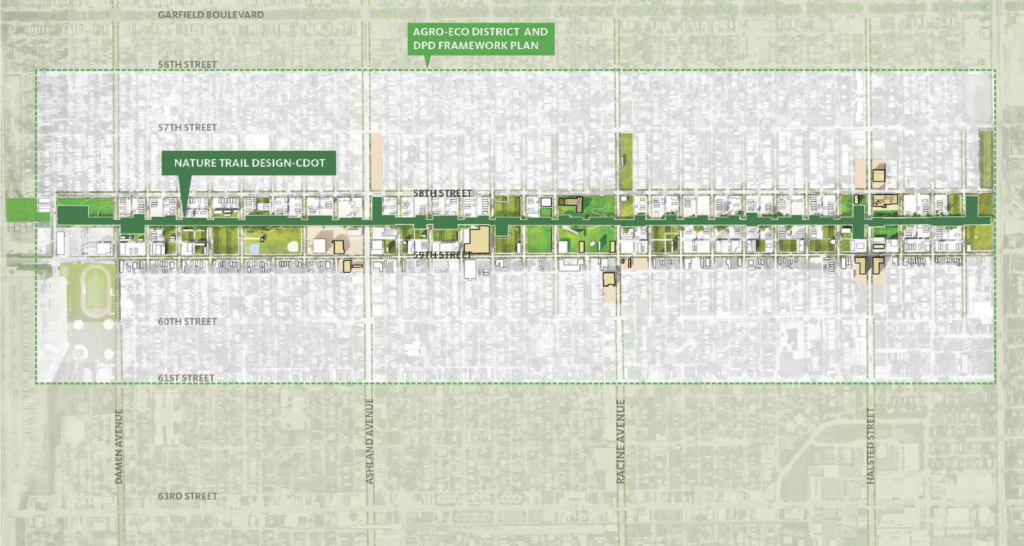
Site plan of Englewood Nature Trail by Gensler
The 1.75-mile-long path will roughly occupy the top 30 feet of the large embankment that stretches mid-block between W 58th and 59th Streets. All together the trail spans over 26 bridges varying from 11 to 29 feet in width with over 1,400 trees scattered along the way, these range from saplings to some over 60 feet tall and are surrounded by various Prairie plants and bushes. However due to the nature of the site’s original use there will have to be remediation work performed up to the top 36 inches of soil.
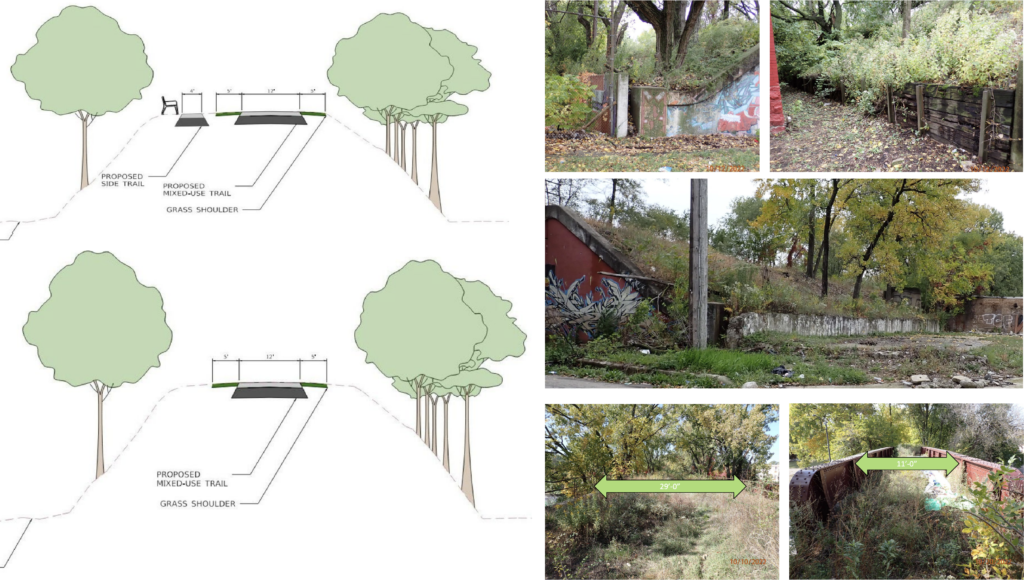
Various path samples and existing conditions of Englewood Nature Trail by Gensler
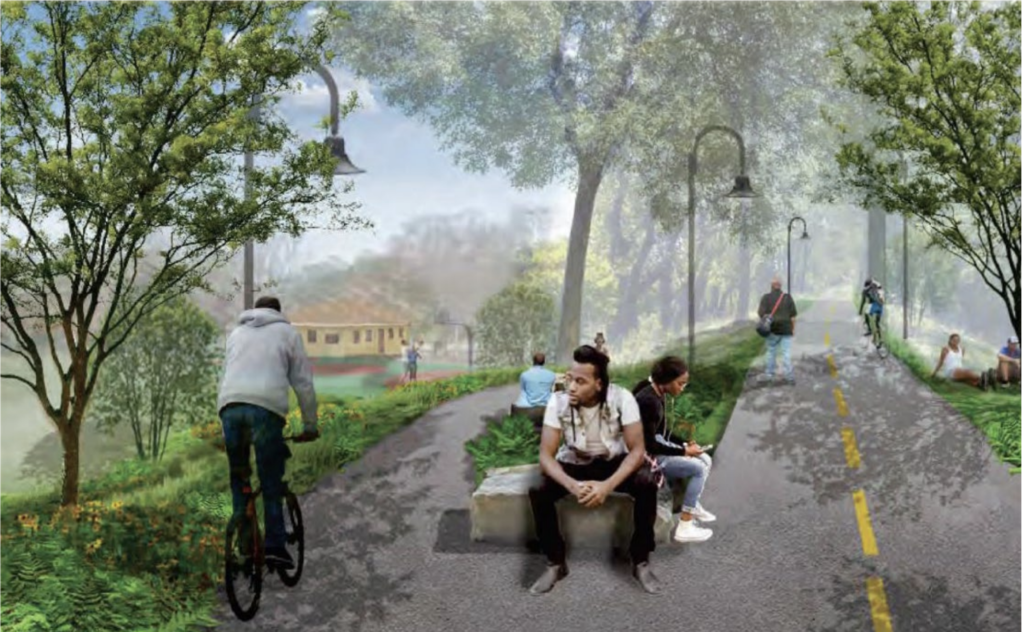
Rendering of Englewood Nature Trail by Gensler
Part of the embankment will be flattened for the 12-foot-wide multi-use trail with bike and pedestrian infrastructure, the initial design study also proposed a five-foot-wide grass shoulder on both sides where possible. As the berm on which it sits changes in size, so will the trail’s activations with expanded plazas, trails, and more with seating opportunities as well. Along the way there will be 11 proposed access points including the western terminus at Hoyne Avenue, Hermitage Avenue, Ashland Avenue, Morgan Street, and the easternmost terminus at Lowe Avenue.
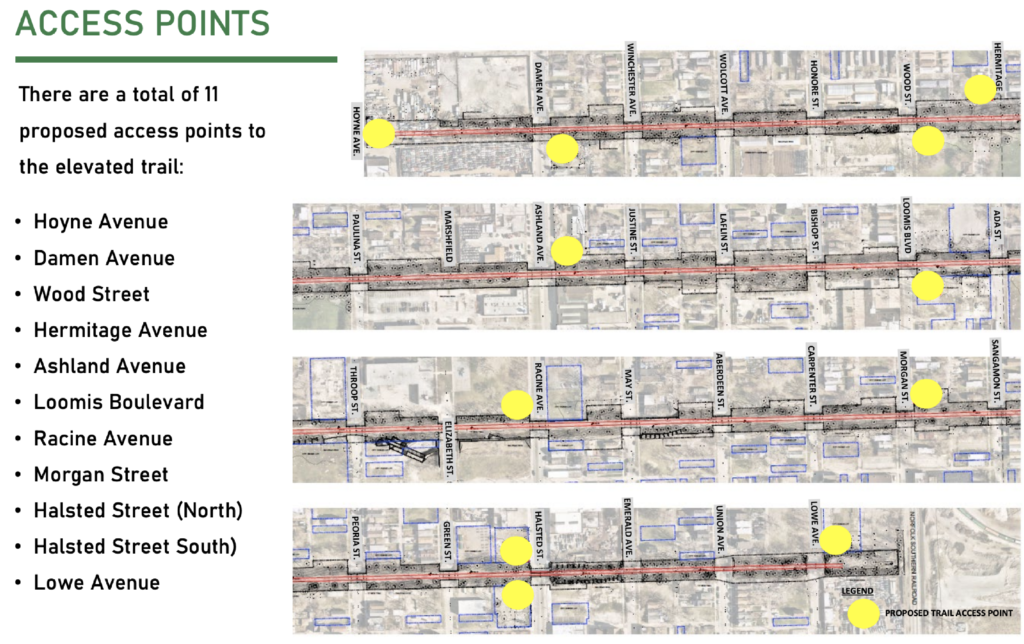
Proposed access points of Englewood Nature Trail by Gensler
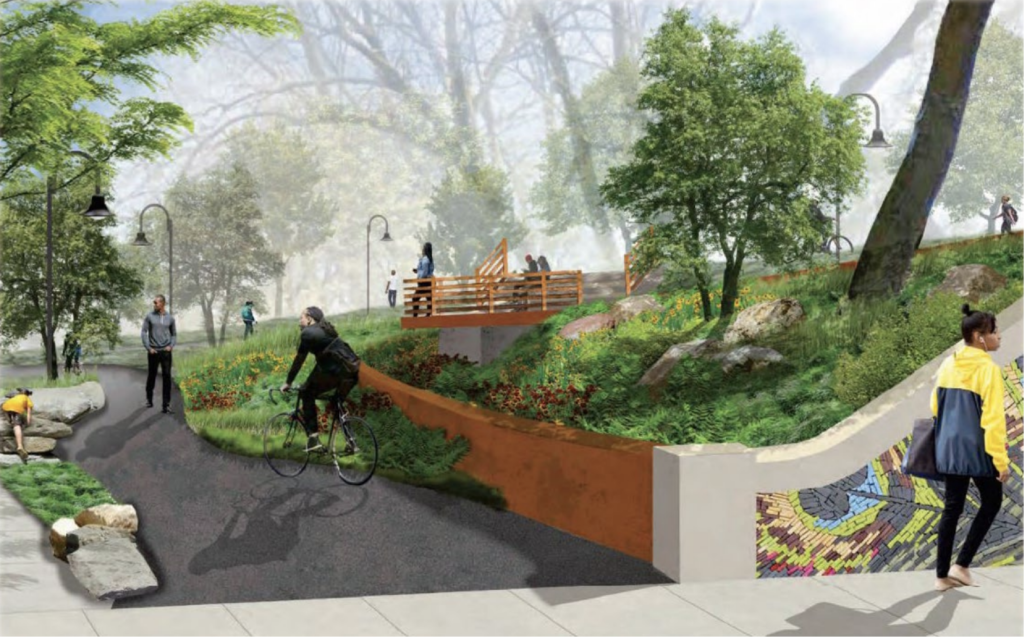
Rendering of Englewood Nature Trail by Gensler
All of the access points will be fully ADA accessible with winding ramps, to construct these some of the aforementioned trees will have to be removed and relocated in order to build the side slope. It is also worth noting that most of the 26 bridges will require repairs and thus will have their existing community murals removed, however the city has begun coordinating with the Department of Cultural Affairs and Special Events (DCASE) on replacing them.

Potential ADA accessible ramp layout for Englewood Nature Trail by Gensler
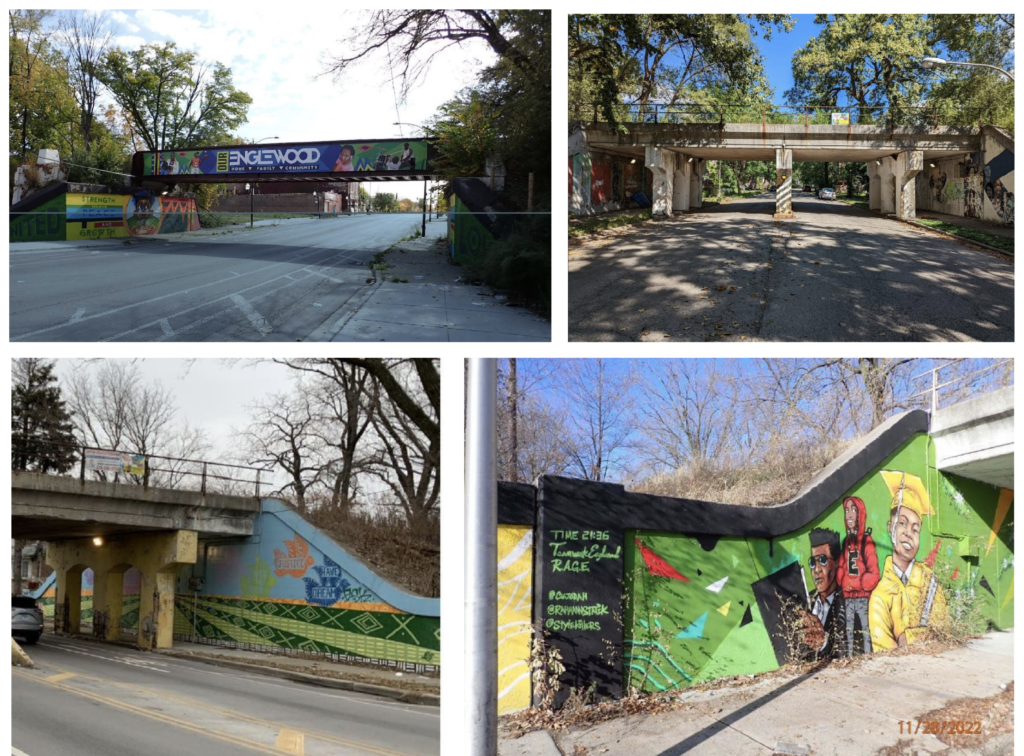
Existing bridges and murals along the Englewood Nature Trail by Gensler
Overall the trail will cost $72 million to construct but may be split up into phases, this is due to a September 2026 start-by date required by the $20 million Rebuilding America Infrastructure With Sustainability and Equity (RAISE) grant the project received last year. However the city is confident it can raise the rest of the necessary dollars before the announced spring 2026 groundbreaking date, but is ready to proceed with a smaller portion first in order to utilize the funds.
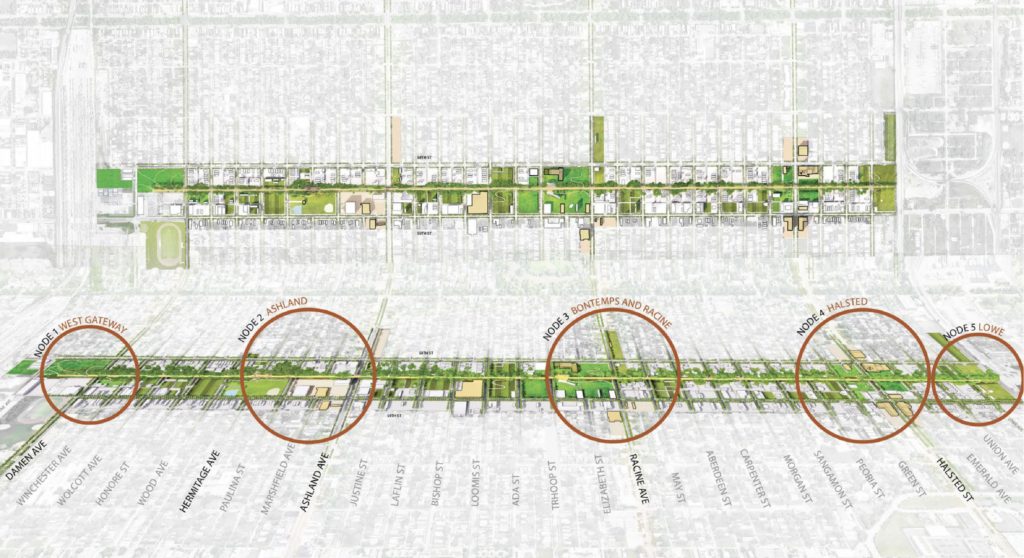
Site plan of Englewood Nature Trail by Gensler
No completion date was given for the overall trail, but local residents can send their comments to the city by April 11th via the e-mail addresses found on the last page of their presentation here.
Subscribe to YIMBY’s daily e-mail
Follow YIMBYgram for real-time photo updates
Like YIMBY on Facebook
Follow YIMBY’s Twitter for the latest in YIMBYnews

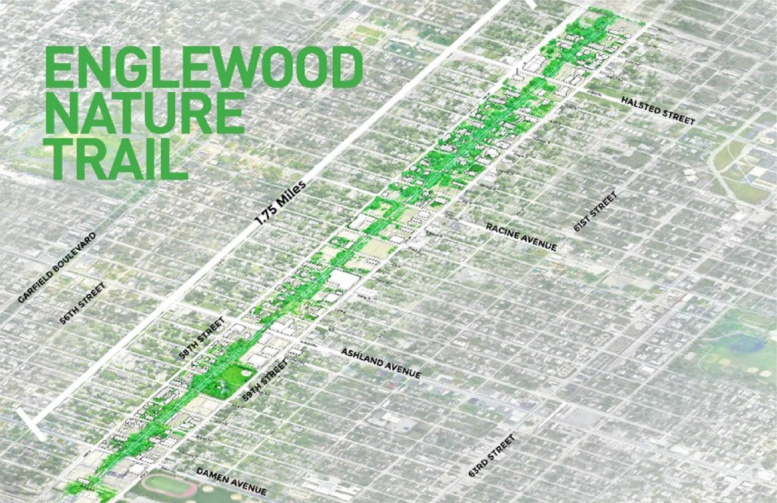
This is seriously a big deal. I am so excited about more greenway expansions within the city. Congrats on this project, and get it done!
looks lovely but let’s not forget the likely order of events:
1. complain that the neighborhood has been disinvested by city
2. get city to turn old rail line into new park
3. build park, rejoice
4. complain about gentrification and displacement caused by city building a new park
5. repeat
Ironic and true – every movement has its victims.
Let’s hope the city learned from the 606 Trail how to mitigate your very accurate description of the cycle of development.
Isn’t Englewood like 60% vacant lots? Anyone who prefers that over “gentrification” isn’t right in the head.
Amen
The nature trail would be a great use of the old rail land. But there are many environmental issues that need to be address first. The US EPA might have grant money available to help offset the cost of a clean-up. And perhaps the containment area can be cleaned up by EPA using Superfund $ . And returned to the community as a brownfield site. It’s worth a try.
The 606 cost $35 million per mile. The Englewood trail is projected to cost 20% more, at $42 million per mile. And that’s before the inevitable cost overruns. Both are inner-city rails to trails projects. Why so much more?
Inflation. I’m surprised it’s not even higher. The last 3 years have been brutal with inflation.
Greatly appreciate the city’s draft rendering of the potential build out of the Englewood Nature Trail. Hope to dive deeper into the draft plan alongside residents, stakeholders and potential users in order to add value to the overall design. The proposed project cost is a good starting point! Hope the public comment period is extended beyond April 11th!
AMEN! There’s huge potential for new infill construction in the neighborhood. And all the needed infrastructure already in place. This can be great for the neighborhood without leading to displacement.
Residential areas are maybe 80% filled – especially if you go a little further north toward Garfield Blvd/55th St. The big potential seems to lie in the commercial areas to the south of the rail line – big vacancies along 59th Street that won’t ever be retail again. And some big parcels being used for industrial purposes like auto reclaimation that could go residential as the area fills in.
Displacement is bad, yes. But anything is an improvement about what that area has been like for the past half century. Anyone who can create meaningful development without corresponding Displacement deserves the Nobel Prize.
If the city could pair this with a homebuyer program to help people in the community own and maintain their own homes, this could be incredible for lifting up the community without pushing out its residents. Plus some business loan encouragement for some grocery stores and restaurants, it could be a rebirth for that community. Definitely wishful thinking.
A good idea but low-income housing in the area would have been a better use of the funds.